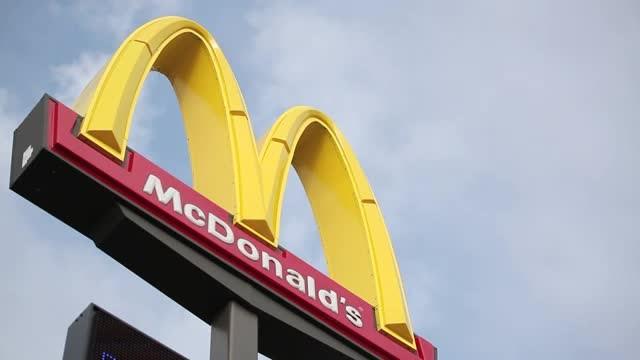Shake Shack is shaking up wages for US fast-food workers
- Published
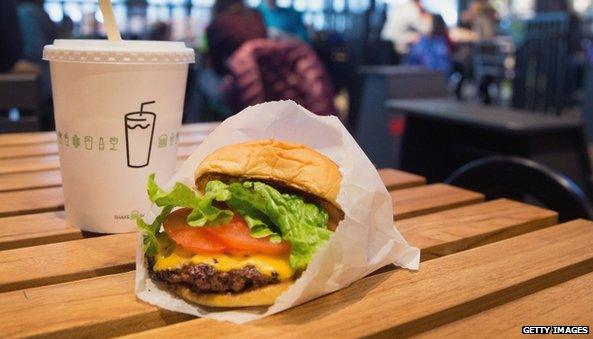
Shake Shack is part of the growing trend of "fast-casual" restaurants taking on giants like McDonald's
Shake Shack is ready to shake it up.
Ever since Danny Meyer opened his take on a hot dog cart in Madison Square Park in New York City in 2004, demand for Shake Shack's all-American food offerings has been insatiable.
Among devotees in New York, the "ShackCam" - a camera which offered a live-video feed of the inevitably long line - was particularly popular. Fans waited nearly five years for Mr Meyer to open up a second location.
But since 2009, the chain has been rapidly expanding, and it now has 63 locations in the US and around the world. Customers spend an average of $13 (£9) - significantly more than at most other competitor restaurants.
On Friday, Shake Shack is poised to gorge on investor demand in its US market debut. Late on Thursday, it priced its offering at $21 per share - netting the firm over $100m to fund future expansion and valuing Shake Shack at $745m.
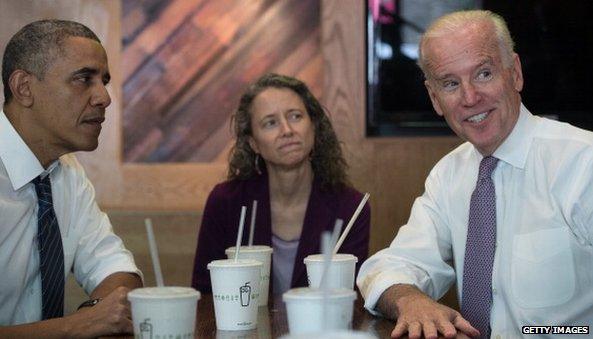
President Obama, shown here at a Shake Shack, has long advocated raising the federal US minimum wage
But Shake Shack is changing more than what people eat and how much they pay for it.
Millennial rebellion
Although the appeal of burgers and concretes - Mr Meyer's take on milkshakes - may seem obvious, the demand for Shake Shack is actually part of a larger shift in US consumption habits towards so-called "fast-casual chains".
The term refers to restaurants like Chipotle, Panera and others that offer consumers the ability to get food fast but eschew the classic fast-food model favoured by established brands such as McDonald's and Burger King.
In that model, food is generally prepared off-site, meaning more chemicals and industrial suppliers are used. The food is then sent to franchises, where workers assemble the ingredients.
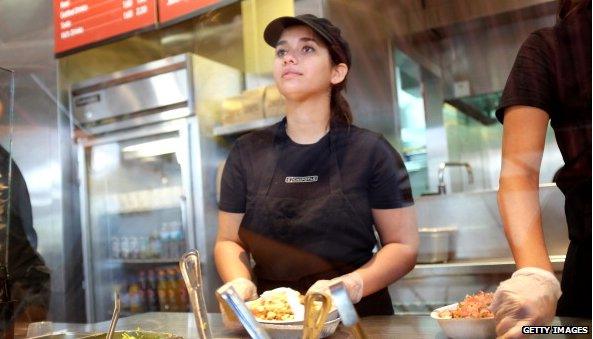
Chipotle, the dominant fast-casual Mexican chain, has supported raising the minimum wage
"When you look at fast casual as a category, it tends to offer the promise of fresher food that's prepared more on-site, that is sourced more sustainably," says Hans Taparia, a professor at New York University's Stern School of Business.
This model is particularly appealing to millennials, he adds, who tend to care less about price - the average "fast-casual" meal is $7.50, compared to $5 for a meal at a chain like Wendy's - than about ethics.
"Every marketer is trying to get access to this millennial consumer - it's an 80-million person strong consumer base, the largest demographic alive today," says Prof Taparia.
Firms such as Chipotle, which have been particularly successful among this group, have seen incredible sales - and large returns to investors.
Chipotle's shares have risen an astounding 1,587% since 2006 when, in a move some have called short-sighted, McDonald's spun it off as a separate company.
Better pay
Crucially, for workers this better food requires more from employees, so it tends to come with better wages.
The minimum wages paid to fast-food workers have been a focus of intense national debate in the US, where activists and unions have been organising fast-food workers into day-long protests agitating for so-called "living wages" of $15 per hour.
"Fifty-two percent of fast-food workers in America earn wages that are below the poverty line," notes Prof Taparia, and even President Obama has called for an increase to the minimum wage to reduce exacerbating income inequality.

Shake Shack pays its workers well above minimum wage in New York
A solution could come not just from legislation, but from these shifting business models.
When it filed for its public stock sale, Shack Shack wrote that it paid its workers in New York City a starting salary of $10 per hour - significantly higher than the New York State minimum wage of $8 per hour.
"We believe that this enables us to attract a higher calibre employee and this translates directly to better guest service," the firm said in the filing, external.
This is deliberate, says MIT's Zeynep Ton, who has studied other firms that pay above minimum wage - firms such as retailer Costco and petrol station-convenience store Quicktrip.
"When you pay more you can attract a more qualified set of employees, you can reduce your employee turnover cost, and you can encourage them to work harder to keep their jobs," she says.
"If you have great employees, and if you have great operations that take advantage of them, then you can use your employees to reduce your cost and improve your service and sales."
Moo money, less problems

Brian Parker co-founded Moo Cluck Moo in Detroit
Just ask Brian Parker, the co-founder of Detroit's Moo Cluck Moo - a recent entry into the growing fast-casual market.
At Moo Cluck Moo's Dearborn location - the company currently has two "concept stores" - a stream of customers came in on a recent Saturday night, braving subzero temperatures to order menu items like the "Notorious Cluck", a gigantic fried chicken sandwich.
Although the restaurant is situated just across the street from a Wendy's and a Taco Bell, it did steady traffic. One customer told the BBC he had just discovered the restaurant the week before and had been five times since.

Moo Cluck Moo serves standard fast-food items
Like other fast-casual chains, the meat and ingredients are ethically sourced and antibiotic free, but Moo Cluck Moo takes the millennial ethics emphasis one step further and pays its workers a $15 per hour living wage.
"It's the right thing to do. It empowers our people, we don't have to babysit our staff and we have low turnover as a result," says Mr Parker, noting that restaurants have been profitable for the past two quarters.
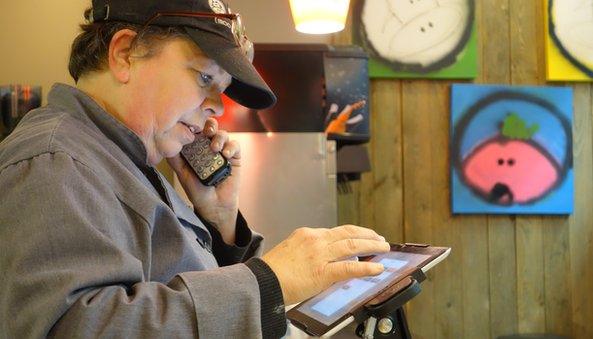
Workers like Sue at Detroit's Moo Cluck Moo are trained to do various jobs in the restaurant
He adds that it also helps that workers - called "culinarians" - are trained in all aspects of the restaurant, from operating the fryer to ringing up customers.
"I was bringing my grandchildren here to eat before I started working here," Sue, a life-long worker in fast-food kitchens, told the BBC as she was operating the till on Saturday night.
"It's probably the best place I've ever worked."
If Shake Shack's debut on Friday can prove not just to customers but also to investors that profitability in the fast-food industry need not come at the expense of sustainability and employee salaries, it could potentially spell pay rises for millions of US fast-food workers.
- Published29 January 2015
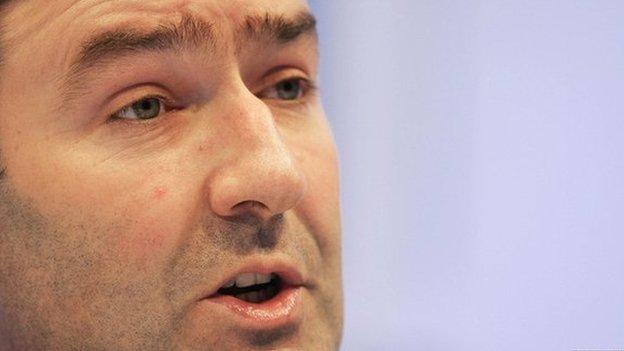
- Published28 January 2015
